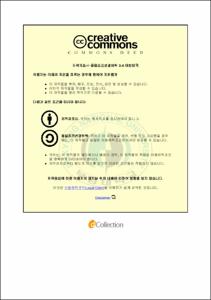수산자원 관리를 위한 가입당 산란자원량 모델의 비교 분석
- Abstract
- Yield per recruit model is the most popular method for fisheries stock assessment. However, stock assessment using yield per recruit model can lead to recruitment overfishing as this model only considers the maximum yield per recruit without spawning biomass for reproduction. For this reason, spawning biomass per recruit model which reveals variations of spawning stock biomass per fishing mortality (F) and age at first capture (tc) is considered as more proper method for stock assessment. There are mainly two methods for spawning biomass per recruit model known as age specific selectivity method and knife-edged selectivity method. In the knife-edged selectivity method, the spawning biomass per recruit has been often calculated using biomass per recruit value by multiplying the maturity ratio of the recruited age. But the maturity ratio in the previous method was not considered properly in previous studies. Therefore, a new method of the knife-edged selectivity model was suggested in this study using a weighted average of the maturity ratio for ages from the first capture to the lifespan. The optimum fishing mortality in terms of F35% which was obtained from the new method was compared to the old method for small yellow croaker stock in Korea. Spawning biomass per recruit was under-estimated when using the old knife-edged selectivity model and the error ranged from 0.61g for the age 4 to 130.69g for the age 1 when comparing with the new knife-edged selectivity model. Also the value of F35% using the new knife-edged selectivity model was 0.302/year and the value using the old model was 0.349/year. However, the value of F35% using the age specific selectivity model was estimated as 0.320/year which was closer to the value from the new knife-edged selectivity model.
In conclusion, the new knife-edged selectivity model could be considered as more proper spawning biomass model than the old knife-edged selectivity model for the analysis of spawning biomass per recruit in stock assessment, since over-estimation of F35% can lead to overfishing of fish stocks.
- Issued Date
- 2015
- Awarded Date
- 2015. 2
- Type
- Dissertation
- Publisher
- 부경대학교
- Affiliation
- 부경대학교
- Department
- 대학원 수산물리학과
- Advisor
- 장창익
- Table Of Contents
- Abstract 1
서 론 4
자료 및 방법 8
1. 자원생태학적 특성치의 추정 8
1.1 체장-체중 관계식 8
1.2 성장계수 8
1.3 사망계수 11
1.4 어장가입연령 및 어획개시연령 13
1.5 성숙비 14
1.6 선택비 14
2. 가입당 산란자원량 모델의 비교 15
2.1 가입당 산란자원량의 기초적 이론 15
2.2 연령별 선택비를 고려하지 않는 가입당 산란자원량 모델 24
2.3 연령별 선택비를 고려한 가입당 산란자원량 모델 27
결 과 28
1. 자원생태학적 특성치의 추정 28
1.1 체장-체중 관계식 28
1.2 성장계수 30
1.3 사망계수 30
1.4 어장가입연령 및 어획개시연령 32
1.5 성숙비 34
1.6 선택비 34
2. 가입당 산란자원량 모델의 비교 36
2.1 연령별 선택비를 고려하지 않는 가입당 산란자원량 모델의 비교 36
2.2 연령별 선택비를 고려한 가입당 산란자원량 모델과 연령별 선택비를 고려하지 않는 가입당 산란자원량 모델의 비교 49
고찰 53
요약 58
- Degree
- Master
- Files in This Item:
-
-
Download
 수산자원 관리를 위한 가입당 산란자원량 모델의 비교 분석.pdf
기타 데이터 / 1.34 MB / Adobe PDF
수산자원 관리를 위한 가입당 산란자원량 모델의 비교 분석.pdf
기타 데이터 / 1.34 MB / Adobe PDF
-
Items in Repository are protected by copyright, with all rights reserved, unless otherwise indicated.